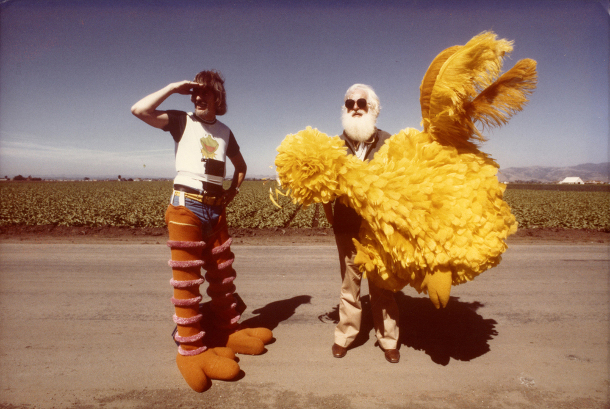
Cast: Fatemeh Cherag Akhar, Hassan Nebhan, Shahr Banou Sisizadeh
Director: Marzieh Makhmalbaf
Country: Iran
Genre: Comedy | Drama
Editor’s Notes: “Third Cinema” was sociopolitical film movement deriving from third world nations during the 1960s and 70s.
Unlike other Arab-Asian nations, Iran stands out as having a rather rich history in cinema. Recent political scandals, further media censorship and oppressive regimes have necessitated an even stealthier cinema if one is to hope for a release in Iran. Filmmakers like Jafar Panahi are only among the most high profile cases of Iranians creating films in political exile, if not literal. The discipline of self-censorship has given these films a veneer of simplicity; moral tales agreeable to nearly all corners of the earth and a formal approach less flashy and more ascetic. Women’s heads are nearly always covered, and much pain goes into making sure the films at least give the impression of being innocuous fare that doesn’t “abandon” Islamic tradition — as the monarchies and mullahs see it, at least — and isn’t too acutely critical of their respective regimes. To the chagrin of these regimes, many of these filmmakers have flourished under this umbrella without ridding their work of their teeth.
Unlike other Arab-Asian nations, Iran stands out as having a rather rich history in cinema. Recent political scandals, further media censorship and oppressive regimes have necessitated an even stealthier cinema if one is to hope for a release in Iran.
The Makhmalbaf family has integrated itself into this umbrella community exceptionally well. Most are familiar with the work of Mohsen, but few know that not only his wife, whose film I’ll be focusing on momentarily, is in the filmmaking business herself, but also two of his daughters, Hana and Samira. Mohsen started his own film school in 1996, and his family learned the trade there. Hana was the youngest person to ever compete at the Venice Film Festival with her 2003 making-of documentary titled Joy of Madness, made in conjunction with her sister’s effort from the same year, At Five in the Afternoon, at age 14. Having seen at least one film from each family member now, I can safely say that talent runs in the family. Samira’s The Apple is my favorite film in the family’s name, and easily among the best Iranian films I’ve ever seen. However, The Day I Became a Woman, mother Marzieh’s debut film, is certainly high quality filmmaking competing for top honors.

The film is separated into three parts associated with females at varying ages. Each part is titled after its protagonist. The first, titled Hava, begins with a little girl likely aged 9 or 10 and her relentless pursuit of play with a young boy who’s a close friend. Grandma informs her she’s becoming a woman and can’t play with boys anymore. As her and Hava’s mother arrange a hijab for her so as to emphasize her “modesty” in accordance with civil code, it’s readily apparent Hava hasn’t the slightest clue what it means to be sexualized. Ironically, only in their insistence on her wearing this piece of clothing and the events that follow has the notion of sexuality become a theme. Her friend, the boy, is no more aware of this foreign idea than she is. The way in which this forced obligation bears sexualized awkwardness is what makes this so potent. Hava has until noon, the time when she was born, to play with the boy, but he’d been forced to leave as Hava’s mom and grandma were too sorting out her hijab and browbeating her, so Hava has to travel to his home where he’s no longer allowed to leave due to obligations with homework. Thus, their only contact comes when they exchange candy through the prison-like window the boy sits behind. They both take turns sucking a lollipop; a gesture that would have otherwise been completely devoid of sexual undertones had it not been for this thrusting of Hava into a world of privilege and responsibility she’s clearly not ready for. The first image in the film is one of the front of a makeshift raft with a large piece of cloth acting as its sail. It’s a stationary image without context initially. Only when we realize, at the end of this first segment, that this piece of cloth is Hava’s hijab she traded to some boys on the beach for a toy fish to play with, does this theme, and the contradiction in the tradition, truly drive home. That piece of cloth, now stripped of its oppressive qualities, is free amidst the sea, a symbolic background featured almost permanently throughout the film. This minor thesis on contextualization is wonderful in and of itself as metatextual icing, but it helps that the segment itself is so perfectly composed and emotionally tender.
This minor thesis on contextualization is wonderful in and of itself as metatextual icing, but it helps that the segment itself is so perfectly composed and emotionally tender.
The sea has, for as long as mankind has had the initiative to move and push boundaries, represented the ultimate in freedom. Its majestic ambiguity and promises of travel and limits not yet tested have bled through the course of recorded history as one of maybe a handful of absolutely timeless motifs. Its prevalence in this film, and the aforementioned significance thereof, resonate yet further as the film progresses into its second part. This one even simpler in execution, but perhaps more daring. A young woman, likely in her older teenage years or early 20s, is participating in a bicycle race as her husband chases her on horseback. She speeds up, refusing to acknowledge his wishes for her to return home. The first image of the bike race is from behind: a sea of anonymous figures in black clothing with their heads covered. Beside them, an easily distinguishable male in a white shirt riding on horseback. This is the first distinction, and a very subtle but important one. The next shot is parallel to the racers. Their identities remain a mystery as their faces are still veiled, but another distinction is born: their bicycles are all unique in design and color. It can be said that these women are more readily identified by their bikes rather than their physical appearance. This is a sharper but even subtler detail that underlines the social milieu in which this narrative operates. As she rides further and further along, breathlessly and doggedly as if her very life depended on it, men from her family continue to approach her demanding her return, claiming she’s aligned herself with the devil and cursing her. When the husband brings along a mullah, he proposes a divorce, which she accepts. If it wasn’t clear before, it seems clear now that she’s eluding a forced marriage. Her bicycle ride carries with it a deeper significance 13 years later when only this year have women in nearby Saudi Arabia been given permission to ride one at all, and still only with the presence of a male relative and not for transportation. In 2013, it feels like a gesture of sisterhood. Wadjda, the first feature film to be shot entirely in Saudi Arabia, and the only film to ever be submitted to the Oscars by Saudi Arabia, concerns a young girl and her desire for a bike. It was considered a shoe-in for nomination, and even possibly a win, but it didn’t make the short list.
The third segment involves an elderly woman. She’s recently inherited a lot of money, so she recruits an ever-growing band of young boys to tow her new material goods around as she acquires more and more. She says she wants all of the things she could never have. Around each of her fingers are knots of cloth representing each item she wishes to purchase. After her shopping spree, she’s left with one little red knot that’s corresponding item she can’t remember. She has the young boys set up all of her new items, and they end up on the beach with an entire household worth of merchandise spread out around her. Childless, she asks two boys if she can adopt them, each of them refusing. The second boy, of Afghan origin, is lighter-skinned and more enticing to her. Two young women riding bicycles tie the third narrative to the second and argue over whether the young woman in the race ever finished or if she was forced home after her two brothers stopped her — the point at which the prior segment ended. They ask her why she needs all of the stuff she has, and posit that they could get married and settle down if they had the items she’s displaying. She doesn’t budge. As the boys ready all of her materials for transportation on the sea to a distant ship, she can’t indulge anyone the tea she’s constantly offered. She climbs aboard the raft carrying her bed, and as she slowly floats away, the young women attempt to help her remember what she’d forgotten. They’re of no help. Perhaps what she forgot was to bestow the youth before her a vigor and vision of life she didn’t get to experience. After all, her comically radical reaction to the “nakedness” of a tea pot and the attempt to return it for the same reason, suggest a woman far behind the times she barely manages to stumble through. Her “freedom” in wealth is drawn in stark contrast to the far more important social freedoms she scoffs at. In a brief hallucinatory glimpse, Hava stares into the distance before Hoora, the old woman, disappears into the horizon. The Day I Became a Woman is an important work: astute, concise and poetically resonant, it carries the torch of Iranian ascetic cinema into the 21st century.
[notification type=”star”]81/100 ~ GREAT. The Day I Became a Woman is an important work: astute, concise and poetically resonant, it carries the torch of Iranian ascetic cinema into the 21st century.[/notification]



